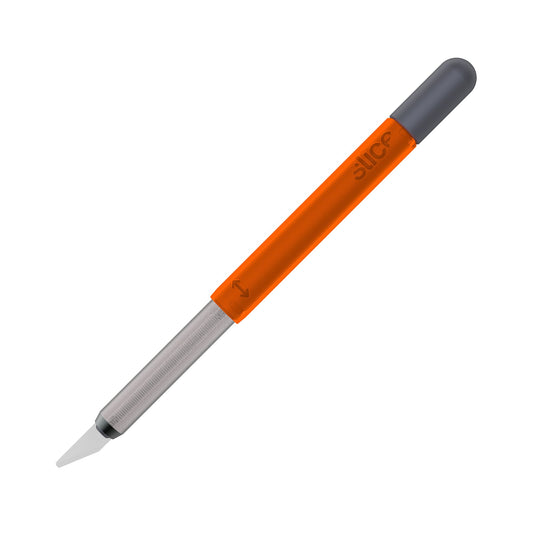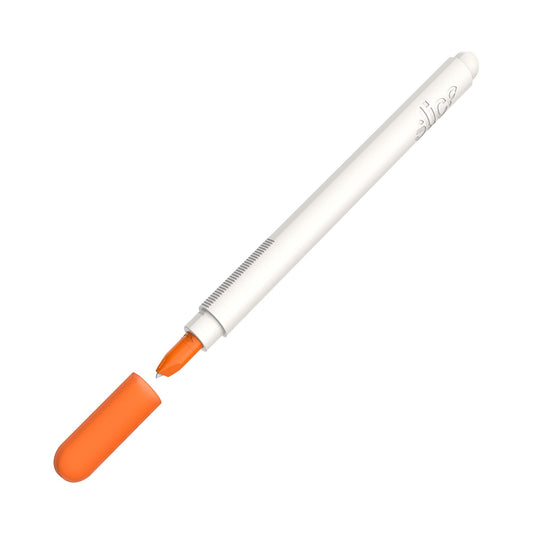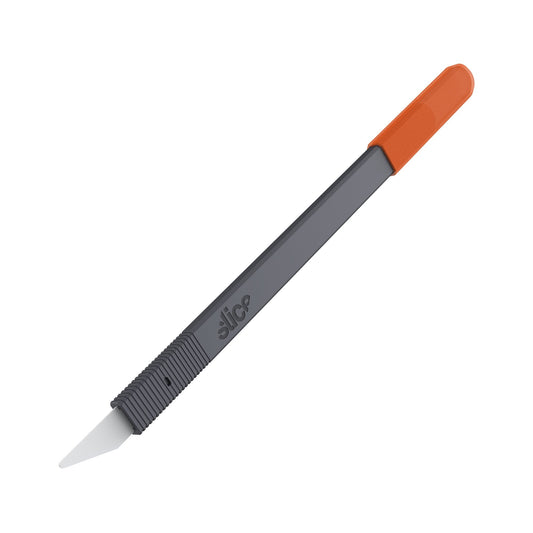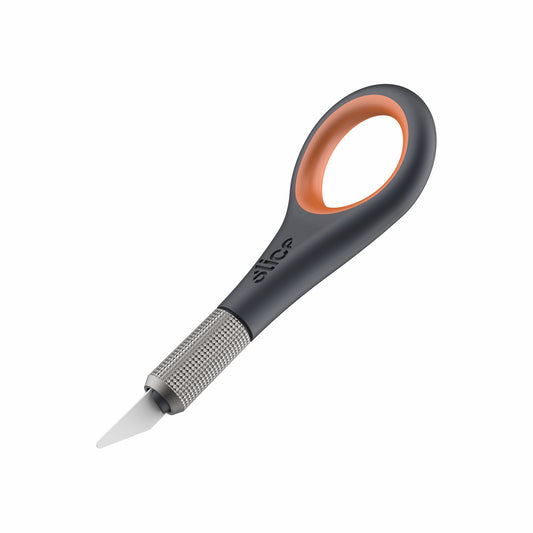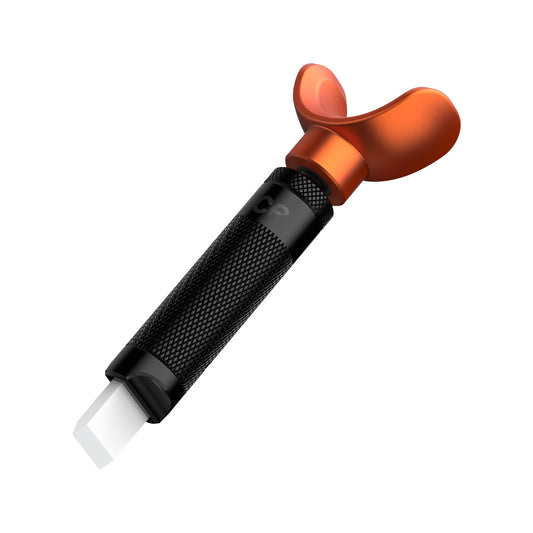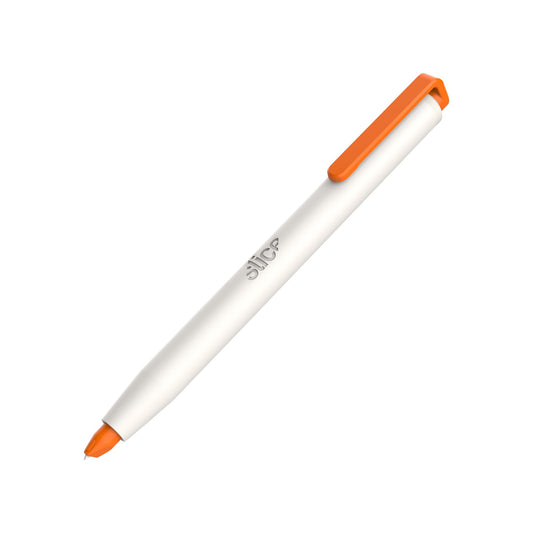Translation missing: hu.accessibility.faq_content_title
What Is a Precision Knife?
Precision knives, sometimes referred to as precision cutters or craft knives, include a variety of tools specialized for fine handling and detailed, free-form cuts. Contrast this with box cutters and utility knives, which prioritize strength over intricate handling. Precision knives allow for fine motor control, similar to a pen. Some, like a precision paper cutter, are designed to cut specific materials, but most precision cutters are effective with a wide variety of materials.
What Are Precision Knives Used For?
These knives are used for a variety of applications, most notably in arts, industrial, or laboratory settings. Typically, a precision knife cuts thinner materials than a box cutter, but depending on the length of the blade, some precision or craft knives can easily handle thicker materials like foam or corrugated packaging.
A crafting knife is a type of precision knife and, as its name suggests, it is primarily used for crafting with materials such as paper, stencils, and pliable sculpting material. The same kind of precision knife is ideal for detailed laboratory or industrial work that requires a delicate touch.
A crafting knife is a type of precision knife and, as its name suggests, it is primarily used for crafting with materials such as paper, stencils, and pliable sculpting material. The same kind of precision knife is ideal for detailed laboratory or industrial work that requires a delicate touch.
What Sets Slice Precision Knives Apart?
Slice® precision knives combine safety and effectiveness. Our blades are made of extremely hard zirconium oxide, an advanced ceramic, and our proprietary design makes the blades safe enough to touch. Unlike traditional precision knives, a Slice precision knife blade maintains a finger-friendly® edge while cutting effectively.
Steel is a soft material that dulls quickly. To extend its cutting life, manufacturers aggressively sharpen steel blades far beyond what is needed to cut materials. This workaround jeopardizes user safety. Unfortunately, it’s also led people to mistakenly equate “very sharp” with “effective.” This isn’t true. Metal blades start dangerously sharp and quickly dull to dangerously dull.
Slice blades start at an effective sharpness and stay there up to 11 times longer than steel. Manufacturers of other ceramic blades mimic the overly sharp design of metal blades, making Slice the only safe choice. Our patent-pending sharpening process keeps fingers safe while giving you long-lasting cutting power.
Slice safety blades offer other advantages to specific industries, compared with steel blades. All of our blades are non-sparking, non-magnetic, chemically inert, and never rust. In addition, they don't require any oil coating and are safe for autoclaves. Our blades can be recycled and rounded-tip models don't require sharps box disposal. Not all ceramic blades have the same material composition, so may they not share all of these properties. None have the added safety of the Slice grind.
Slice offers several styles of precision knife including two craft knives, the Precision Knife, and the 10568 scalpel, all of which have replaceable blades. Our 00116 Precision Cutter features a fixed micro-ceramic blade and our 10574 Disposable Scalpel is meant for one-time use in sterile environments. All of these tools have a slim profile, ambidextrous handle, non-slip grips, a safety cap, and our finger-friendly edge. The best choice for you will depend on your application and how often you use your tool.
Steel is a soft material that dulls quickly. To extend its cutting life, manufacturers aggressively sharpen steel blades far beyond what is needed to cut materials. This workaround jeopardizes user safety. Unfortunately, it’s also led people to mistakenly equate “very sharp” with “effective.” This isn’t true. Metal blades start dangerously sharp and quickly dull to dangerously dull.
Slice blades start at an effective sharpness and stay there up to 11 times longer than steel. Manufacturers of other ceramic blades mimic the overly sharp design of metal blades, making Slice the only safe choice. Our patent-pending sharpening process keeps fingers safe while giving you long-lasting cutting power.
Slice safety blades offer other advantages to specific industries, compared with steel blades. All of our blades are non-sparking, non-magnetic, chemically inert, and never rust. In addition, they don't require any oil coating and are safe for autoclaves. Our blades can be recycled and rounded-tip models don't require sharps box disposal. Not all ceramic blades have the same material composition, so may they not share all of these properties. None have the added safety of the Slice grind.
Slice offers several styles of precision knife including two craft knives, the Precision Knife, and the 10568 scalpel, all of which have replaceable blades. Our 00116 Precision Cutter features a fixed micro-ceramic blade and our 10574 Disposable Scalpel is meant for one-time use in sterile environments. All of these tools have a slim profile, ambidextrous handle, non-slip grips, a safety cap, and our finger-friendly edge. The best choice for you will depend on your application and how often you use your tool.
What Is a Micro-Ceramic-Blade Precision Cutter?
The micro-ceramic-blade cutter is a category of safety knife that Slice essentially invented with products like the 00116 Precision Cutter. The defining feature of this sort of precision tool is a barely exposed blade. Many precision knife applications are for thin materials like paper, plastic, or stencils. This blade works well for such uses; it’s even great with hard clamshell packaging. Slice makes two additional micro-ceramic-blade cutters: the mouse-shaped 00200 Safety Cutter and 10583 Safety Cutter Ring. These tools are excellent for straight or curved cuts.
When materials are thin, only a very small cutting edge is required to do the job. As a general safety principle, the lowest effective level of blade exposure is the safest. In other words, you don't need a two-inch blade to cut through paper; any more blade than necessary puts your hands at risk.
When materials are thin, only a very small cutting edge is required to do the job. As a general safety principle, the lowest effective level of blade exposure is the safest. In other words, you don't need a two-inch blade to cut through paper; any more blade than necessary puts your hands at risk.
What Are Replaceable-Blade Precision Cutters?
Replaceable-blade precision cutters include any type of precision cutting tool that allows you to replace the blade. The Slice Craft Knife is one example of this style of tool (also available as the 10589 with Never-Lost™ Safety Cap). This kind of cutter works best for materials that are too thick for a fixed micro-ceramic blade. Other Slice knives in this category include the Precision Knife and the 10568 Scalpel.
When the blade eventually dulls on a replaceable-blade knife, you can keep using the handle by putting in a fresh blade. Slice craft knife blades, which fit most of the replaceable-blade tools mentioned here, come in several styles: rounded-tip, pointed-tip, concave seam rippers, double-edged, and chisel blades. This allows you to customize the same handle to fit many needs. Applications that require a piercing action are better suited to pointed tips, while rounded tips add a level of safety to precision knives, guarding against accidental punctures.
When the blade eventually dulls on a replaceable-blade knife, you can keep using the handle by putting in a fresh blade. Slice craft knife blades, which fit most of the replaceable-blade tools mentioned here, come in several styles: rounded-tip, pointed-tip, concave seam rippers, double-edged, and chisel blades. This allows you to customize the same handle to fit many needs. Applications that require a piercing action are better suited to pointed tips, while rounded tips add a level of safety to precision knives, guarding against accidental punctures.


